Post by Sai Kiersarsky, Portland State University Neuroscience Club
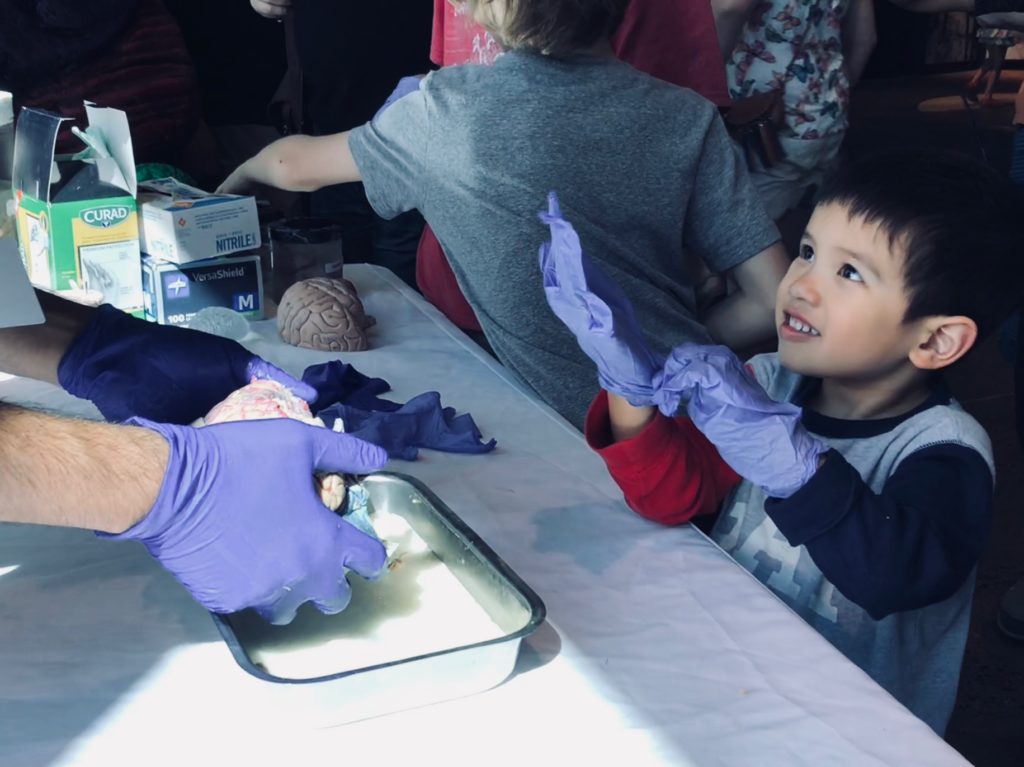
Would the world be a better place if people had a better understanding of the working of their own brains, and how their brains interacted with the world, including other peoples’ brains? What would the world be like if people had this awareness from a very young age?
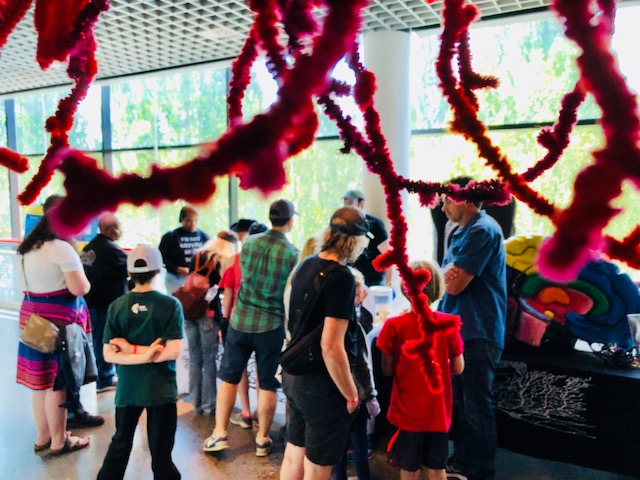
The Portland State University Neuroscience Club and NW Noggin are on the case, helping to illuminate the mysterious and fascinating voyage into brain science. Last weekend, we paid a special visit to the Oregon Museum of Science & Industry (OMSI), conducting an event featuring real human brains that people of all ages could see and hold, creative art projects to participate in, 3-D printed brains, brains of a variety of animals, and other engaging activities.

The timing of the event was most fortunate, as it coincided with the closing of a six month exhibit on artificial intelligence and robotics called Robot Revolution. Pilgrims of science coming to witness the closing of the exhibit were able to satiate and stoke their enthusiasm for a variety of types of intelligence, both synthetic and biological…
LEARN MORE: Artificial Intelligence and brain
LEARN MORE: The Three Laws of Neurorobotics

As museum goers exited the robotics exhibit, the current star of earthly intelligence made its appearance: the human brain. Tables greeted the visitors with trays of human brains, jars of various animal brains, 3D printed brains – and a team of volunteers to reveal fascinating information about it all.


Since the brain event was not part of the regular OMSI exhibits, the colorful neuroscience display took visitors by surprise. The excitement of hearing kids and adults encountering this rare opportunity never wore off. The enthusiasm of the visitors fed into the excitement of the volunteers, which fed back into the excitement of the visitors, like a really really exciting feedback loop!
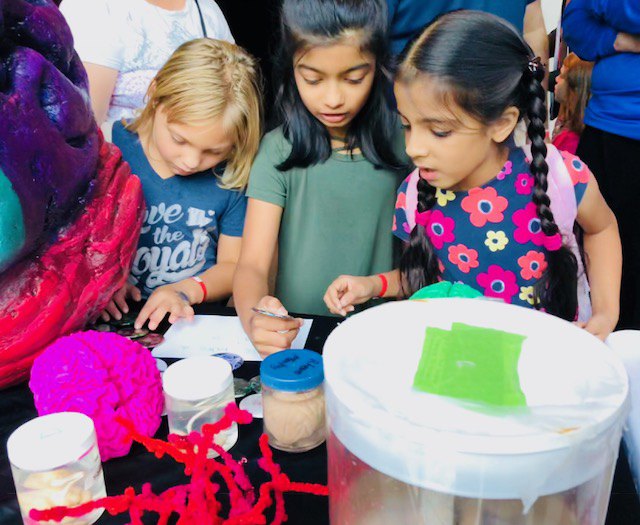


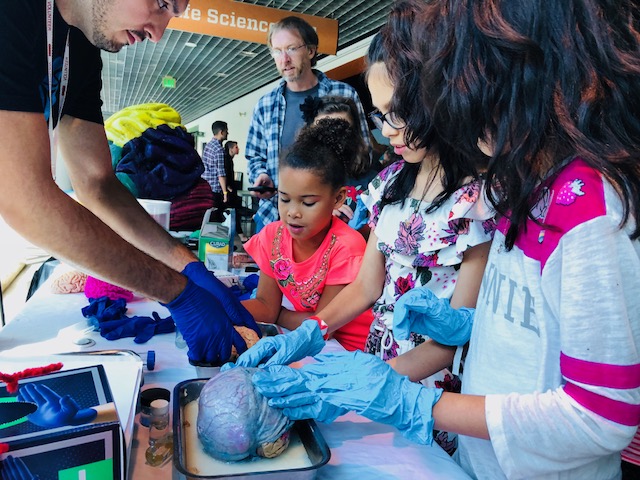
Echoing throughout the corridor were repetitions of a similar series of questions, all with increasing degrees of curiosity and hair-raising amazement…

“Are those real brains?” “Yes!”

“Are those human brains??” “Yes!”

“Can we touch them???” “Yes!”
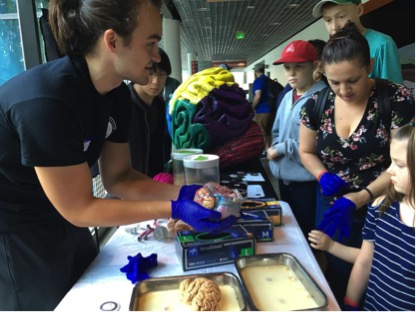
It’s hard to describe the feeling of holding a real human brain. Of course, the reader is (likely) holding one as they read this, in their skull. But to be able to directly see and touch the physical structure that is able to generate someone’s entire internal universe is something that is almost beyond belief.

It’s one thing to know that your internal world happens inside this three pound form of mysterious squishy matter, but it’s another thing altogether to actually see it and to hold it. Not many people get this opportunity in their entire lives.

Children and adults of all ages suddenly became neuroscientists, poised with fresh questions and eager to learn more.

As a pleasant surprise, it was a pleasure to have been interviewed and live-broadcasted via the Twitch channel GeeksLife…
 LEARN MORE: GeeksLife on Twitch
LEARN MORE: GeeksLife on Twitch
Watch Highlight: Human Brains with NW Noggin @ OMSI from GeeksLife on www.twitch.tv

We enjoyed a fascinating 45 minute conversation about our favorite piece of anatomy, with Aaron Eisen, Louis Sumrall, and Bill Griesar offering explanations on brain matters, including topics ranging from the natural gyroscope-like structures within the body – the vestibular system (at around 11:00 in the video), the surgical separation the two halves of the brain to treat epilepsy (15:00 in the video), and a new Oculus Rift Virtual Reality technology to look inside people’s brains (at 37:00).
LEARN MORE: Nerdificent podcast Episode 6 (Twitch)
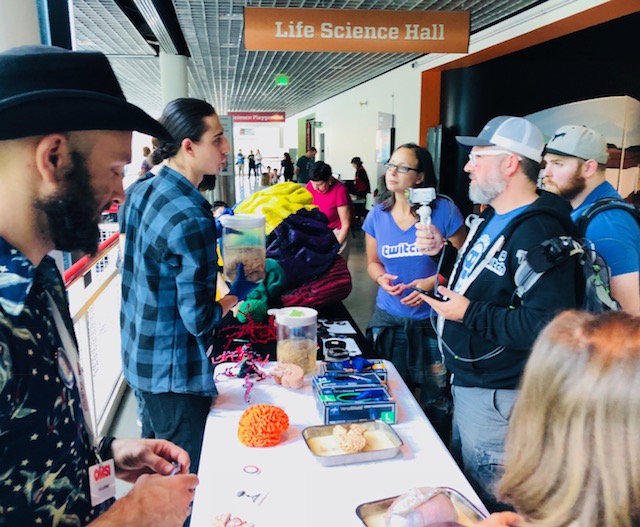
“I learned more in the last ten minutes than I ever did in school!”
LEARN MORE: Vestibular pathways involved in cognition
LEARN MORE: Brain connectivity and the self: the case of cerebral disconnection

After visitors were treated by this very special experience, they encountered another very special experience: making their own neurons!

LEARN MORE: STEAM Art Projects
Colorful pipe cleaners were on display and kids had the opportunity to make their very own neuron models out of pipe cleaners. Hands on creative exercises help kids to learn about how the brain works and to develop their creativity at the same time. The interplay of neuroscience and the arts is central to NW Noggin and the PSU Neuroscience Club.

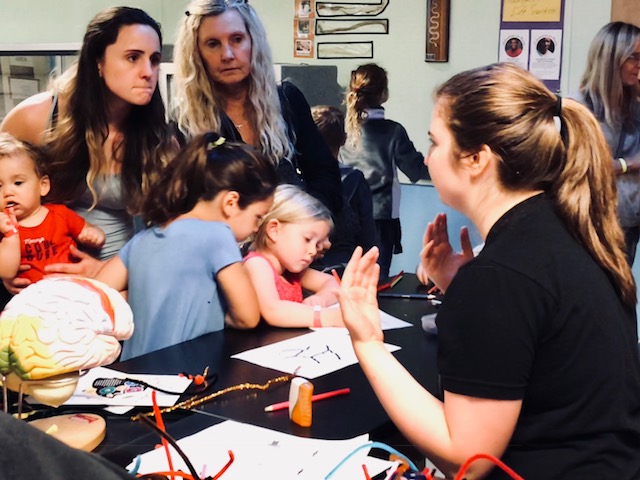

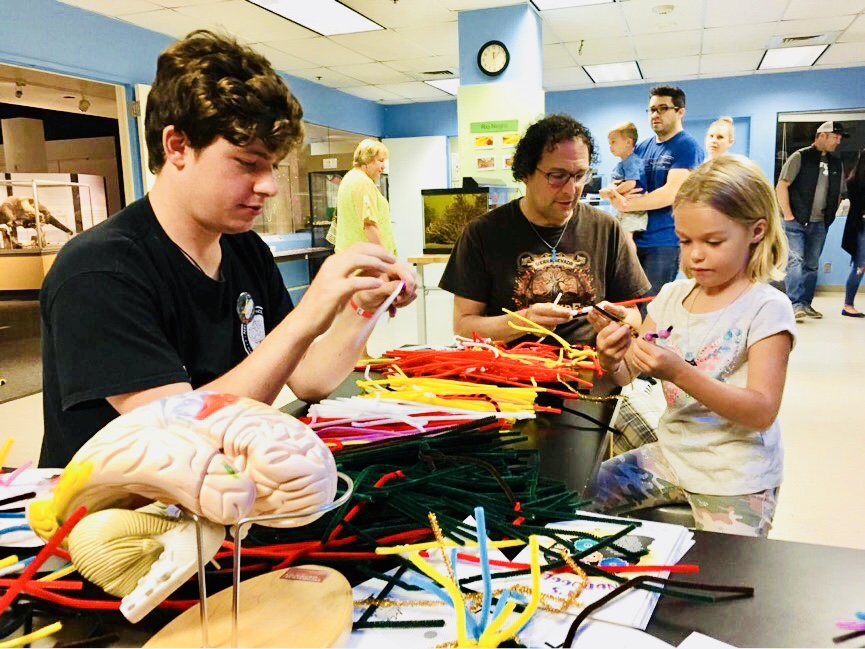
Neurons of all kinds were born…
LEARN MORE: Neurogenesis in the Adult Brain
LEARN MORE: Adult Neurogenesis in the Mammalian Brain
LEARN MORE: Mental health @ McMenamin’s
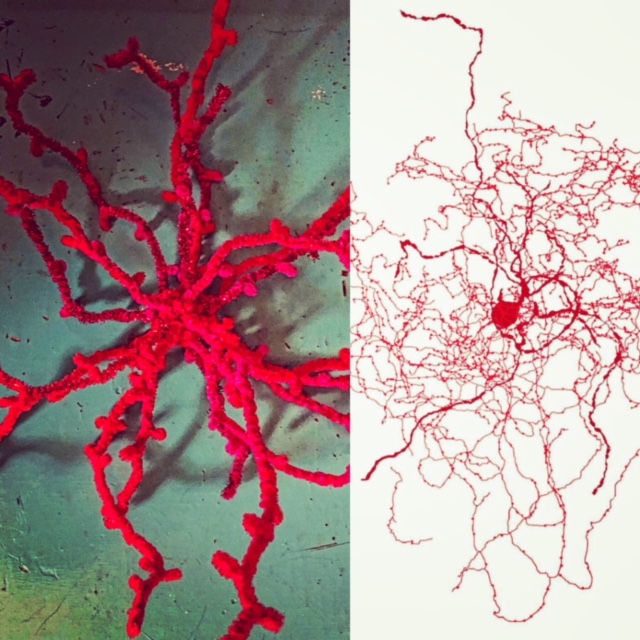
Including the newly discovered “rosehip” neuron!
LEARN MORE: Rosehip neurons in pipe cleaners!

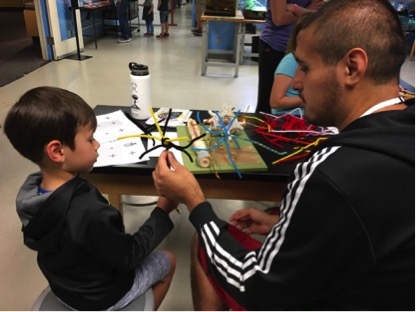
“A typical neuron makes about ten thousand connections to neighboring neurons. Given the billions of neurons, this means there are as many connections in a single cubic centimeter of brain tissue as there are stars in the Milky Way galaxy” – David Eagleman

Many thanks to our terrific volunteers, and to OMSI for a brainy Labor Day weekend!

Participants: Aaron Eisen, PSU; Jesse Benefiel, PSU; Louis Sumrall, PSU; Sai Kiersarsky, PSU; Leota Wolford, PSU; Hannah Olivia, PSU; Julia Schmidt, PSU; Thomas Madison, PSU; Jeehoon Jung, WSUV; Roberto Garduno, PSU…



